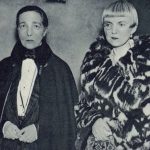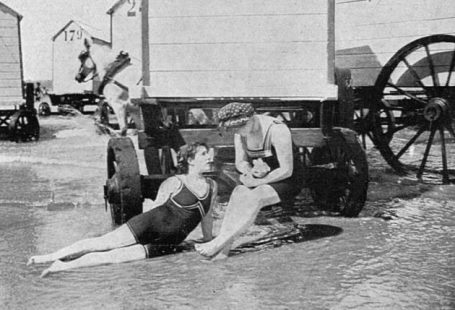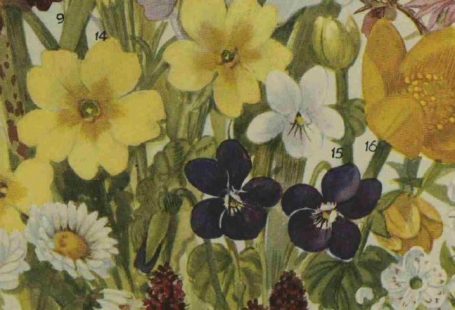
June is Pride Month. At The Archive, we are delving into the newspapers and pulling out the breadth of LGBTQ history available.
Register now and explore The Archive
18th Century Gay Subculture
18th century London was home to a flourishing gay subculture with Molly Houses at the centre of the social scene. ‘Molly’ was a slur used for effeminate, homosexual men and the term was adopted to describe the clubs, taverns, inns, or coffee houses where they met up in secret. Although the establishments or meeting places were called ‘mollies,’ men of all types frequented the houses, including masculine, effeminate, working-class, aristocracy, etc.
In the 18th century, being caught in a homosexual act or the act of sodomy could have meant time spent in the pillory, penal service, transportation, or even a death sentence depending on the case and the evidence. The Molly Houses were also targeted by police raids and our newspapers capture the arrests and punishments of the clientele and landlords.
Although the Molly Houses could be raided by police, they provided a safe place for homosexual men to socialise and openly discuss or express their identities. Many houses were also quasi-brothels and places to find pleasure. Historian Rictor Norton identified that many of the houses were located around London’s Covent Garden, Moorfields, Lincoln’s Inn, and the Royal Exchange. They tended to be in areas known to be home to high levels of prostitution and crime.
The Molly Club
To understand the history of the Molly House, we have to look beyond the newspapers. We have a contemporary description from the journalist Ned Ward’s The Secret History of London Clubs published in 1709. Ward described The Mollies’ Club as a place where a ‘curious band of fellows’ met and held parties. The mollies, he illustrated, ‘rather fancy themselves women, imitated all the little vanities that custom has reconcil’d [sic] to the female sex, affecting to speak, walk, tattle, curtsy, cry, scold, and mimick [sic] all manner of effeminacy.’

Furthermore, men recreated heteronormative life events such as marriage and childbirth. The text reported,
when they are met, together, their usual practice is to mimick [sic] a female gossiping and fall into all the impertinent tittle tattle that a merry society of good wives can be subject to. Not long since they had cushioned up one of their brethren, or rather sisters, according to female dialect, disguising him in a woman’s night-gown, sarsanet hood, and night-rail
Ward’s description of the scene doesn’t seem too far off from what we describe as camp today with these performances as a type of drag performance. We can even interpret hints of trans identities among the mollies.
Ward explained that the men referred to each other as sisters and using the female pronoun. The mollies had ‘children’, sisters and husbands. They created there own kinships and families networks. There is a long tradition of homosexuals creating a chosen family with whom they can be open and vulnerable about identity and desire.
Raids and arrests

According to the historian Randolph Trumbach, code words were used to disguise where the men were going. The molly house was referred to as the coffee-house. A ‘Molly House’ could be as simple as a room in a house where men gathered or more lavish as a special adjacent room in a tavern or inn. The historian has identified 17 raids on molly houses between 1726 and 1727. The newspapers tell us the devastating aftermath of the raids and arrests.
In one case, a raid on Mother Clap’s House resulted in the arrest of 40 men and three were executed. Margaret ‘Mother’ Clap operated a Molly House, known as Mother Clap’s House, in Holborn, London. In 1726, the house was raided and 40 men were arrested as well as Mother Clap. The Caledonian Mercury tells us that Margaret Clap stood in the pillory for keeping a disorderly house for the entertainment of sodomites.

The Ipswich Journal reported the names of the three men who were executed after the raid for being sodomites: Gabriel Lawrence, William Griffin and Thomas Wright. They travelled in the same cart to their execution.

Centuries later, Mother Clap was remembered in a play titled Mother Clap’s Mother House. The play traced three centuries of homosexuality beginning with Mother Clap’s molly house to a 21st century home.
The play had some shocking scenes interlaced with humour. Overall It showed the similarities of human behaviour across centuries.

The number of Molly House raids demonstrates there was a gay culture in London in the later 18th century and early 19th century. The trial records and proceedings which you can find on London Lives further paints a vibrant and flourishing subculture even in the face of discrimination and criminalisation. One of the main agitators pushing for the arrests of homosexual men was the Society for the Reformation of Manners who planted spies and informant to help bring men to prosecution and even to their death.
This 1825 article from the Morning Chronicle, refers to the Mother Clap House raid and mentions the society and indicates that some of the men were convicted on false evidence.

The newspapers didn’t often use the phrase ‘Molly House.’ You can find raids under ‘House for the Entertainment of Sodimites’ or ‘Keeping a Disorderly House’, which was the case for Hornby and Whaley. They were sentenced to stand in the pillory at Charing Cross then six months in prison. After that time, they were to give security for their good behaviour for 7 years.

Standing in the pillory was brutal and aching, but it was always made worse by the opinion of the crowd. In cases of sodomy or disorderly houses, the crowd were usually aggressive against the accused. From their time in the pillory, Hornby and Whaley were described as ‘so loaded with dung and dirt, that they appeared like bears’ (Ipswich Journal, 7 January 1727).
White Swan, London
Another raid took place in 1810 at the White Swan on Vere Street in London. The men arrested were also taken to the pillory, but the scene erupted in violence. Over 100 constables were present to escort the prisoners, James Cooke, James Amos (nicknamed Sally Fox), William Thompson, Richard Frances and James Donn, to the pillory.
While be taunted and jeered, Amos laughed at the crowd. They were showered with mud, potatoes, turnips, offal and even dead cats. Afterwards, while returning to the prison from the pillory, the crowd broke through and assaulted the men.
Cooke received several hits in his face, and he had a lump raised upon his eyebrow as large as an egg.

Looking back
The sheer number of raids and convictions in the 1720s does validate that there was a gay subculture in London. We don’t know more about other cities across England. Furthermore, the records do not show women or lesbian frequently these establishments. Throughout history, lesbians are more difficult to trace in the records for the main reason that lesbianism was not criminalized in the same way it was between men.
Without personal testimonies or accounts, we must tread lightly when assigning 21st-century terms to 18th-century culture. The descriptions we do find of the ‘mollies’ and the activities which transpired at Molly Houses does hint at a cross-dressing or drag culture, with some suggestion of trans identities. The events and men we have found in the 18th-century echo through the centuries from the underground clubs of the 20s to the police raids on gay night clubs in the 60s.






